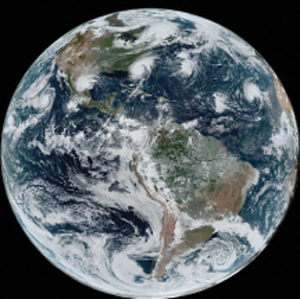Article contents
A multiple time scale approach for anisotropic inertial wave turbulence
Published online by Cambridge University Press: 31 October 2023
Abstract

Wave turbulence is the study of the long-time statistical behaviour of equations describing a set of weakly nonlinear interacting waves. Such a theory, which has a natural asymptotic closure, allows us to probe the nature of turbulence more deeply than the exact Kolmogorov laws by rigorously proving the direction of the cascade and the existence of an inertial range, predicting stationary spectra for conserved quantities, or evaluating the Kolmogorov constant. An emblematic example is given by fast rotating fluids for which a wave turbulence theory has been derived by Galtier (Phys. Rev. E, vol. 68, issue 1, 2003, p. 015301). This work involves non-trivial analytical developments for a problem that is anisotropic by nature. We propose here a new path for the derivation of the kinetic equation by using the anisotropy at the beginning of the analysis. We show that the helicity basis is not necessary to obtain the wave amplitude equation for the canonical variables that involve a combination of poloidal and toroidal fields. The multiple time scale method adapted to this anisotropic problem is then used to derive the kinetic equation that is the same as the original work when anisotropy is eventually taken into account. This result proves the commutativity between asymptotic closure and anisotropy. In addition, the multiple time scale method informs us that the kinetic equation can be derived without imposing restrictions on the probability distribution of the wave amplitude such as quasi-Gaussianity, or on the phase such as random phase approximation that naturally occurs dynamically.
Information
- Type
- JFM Papers
- Information
- Copyright
- © The Author(s), 2023. Published by Cambridge University Press
References
- 4
- Cited by


